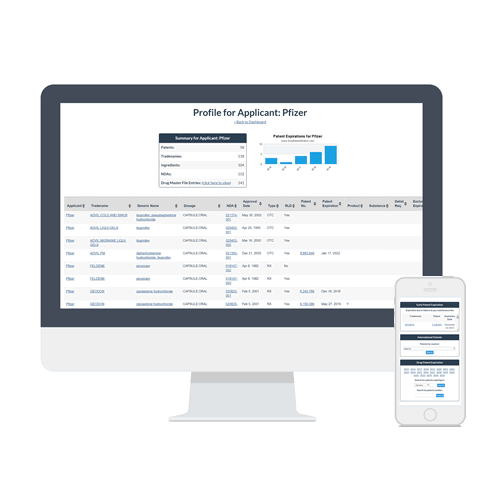
The generic drug industry faces significant regulatory challenges that can impact the quality and safety of these life-saving medications. With the majority of generic drugs manufactured overseas, ensuring compliance with regulatory standards is crucial. This article delves into the complexities of generic drug regulation, highlighting the challenges faced by the U.S. Food and Drug Administration (FDA) and the strategies employed by generic drug manufacturers to navigate these challenges.
Table of Contents
The Regulatory Landscape
The FDA plays a critical role in ensuring the safety and efficacy of generic drugs. However, the agency faces significant challenges in regulating these products, particularly those manufactured outside the United States. The FDA’s global inspection and facility evaluation efforts focus on higher-risk facilities to prevent, uncover, and correct data integrity issues and manufacturing problems. Additionally, the agency monitors reports from industry, patients, and healthcare providers to identify and resolve quality problems and concerns.
Challenges in Overseas Manufacturing
The reliance on overseas manufacturers, particularly those in India and China, raises concerns about quality control and regulatory oversight. These countries offer lower labor costs and less stringent environmental regulations, making them attractive to generic drug manufacturers. However, this also means less monitoring and regulatory oversight, which can lead to quality issues and manufacturing problems. In 2010, 64% of foreign manufacturing plants had never been inspected by the FDA, and in 2015, 33% were still yet to receive a visit from regulators.
Competition and Cutting Corners
The generic drug market is highly competitive, with manufacturers striving to offer the lowest prices possible. This pressure to reduce costs can lead to cutting corners on quality control and manufacturing processes. As noted by White, “The financial pressures in the generic market are such that it’s very hard for people to be able to raise prices, even if they needed to raise prices for quality. Their financial solvency is contingent upon meeting certain price points. Their competitor ends up coming out at a lower price point, and then they’re under pressure to be able to go down and meet it.”
Ensuring Quality and Safety
To ensure the quality and safety of generic drugs, it is essential to maintain vigilance in identifying and addressing quality problems and concerns. This includes implementing robust quality control measures, conducting regular inspections, and monitoring reports from industry, patients, and healthcare providers. The FDA’s efforts to increase transparency and harmonization in regulatory approaches for complex generics are crucial in this regard.
Strategies for Generic Drug Manufacturers
Generic drug manufacturers must navigate the complex regulatory landscape by employing strategies that ensure compliance with regulatory standards while maintaining profitability. This includes:
- Forward/Backward Integration: Redesigning the supply chain through forward/backward integration can reduce dependence on distributors and active pharmaceutical ingredients (APIs) suppliers, thereby improving quality control and reducing costs.
- Patent Oversight: Encouraging stricter patent oversight by the U.S. Patent and Trademark Office can help eliminate weak secondary patents that do not meet key standards, thereby reducing the potential for frivolous petitions and reverse-payment settlements.
- Bioequivalence Testing: Implementing robust bioequivalence testing processes can help ensure that generic drugs meet the required standards for therapeutic equivalence.
Conclusion
Managing regulatory challenges in generic drugs is crucial to ensuring the quality and safety of these life-saving medications. By understanding the complexities of the regulatory landscape and employing strategies that address these challenges, generic drug manufacturers can navigate the regulatory environment effectively while maintaining profitability. As noted by Chester “Chip” Davis, Jr., AAM president and CEO, “The balance in the thriving and constantly-changing marketplace promoting innovation in drug development and accelerating the availability of lower-cost generic alternatives is threatened.”
References:
- Pharmaceutical Technology. (2021, October 6). Generic drug safety: US regulators struggle to keep up with a global market. Retrieved from https://www.pharmaceutical-technology.com/features/generic-drug-safety-us-regulators-struggle-global-market/
- US Pharmacist. (2018, May 18). Navigating the Generic Regulatory Landscape. Retrieved from https://www.uspharmacist.com/article/navigating-the-generic-regulatory-landscape
- NCBI. (2021, July 22). A pragmatic regulatory approach for complex generics through the FDA’s abbreviated approval pathways. Retrieved from https://www.ncbi.nlm.nih.gov/pmc/articles/PMC8597169/
- The Commonwealth Fund. (2017, September 18). Strategies That Delay Market Entry of Generic Drugs. Retrieved from https://www.commonwealthfund.org/publications/journal-article/2017/sep/strategies-delay-market-entry-generic-drugs
- KPMG. (2023). Generics 2030: Three strategies to curb the downward spiral. Retrieved from https://kpmg.com/us/en/articles/2023/generics-2030-curb-downward-spiral.html


